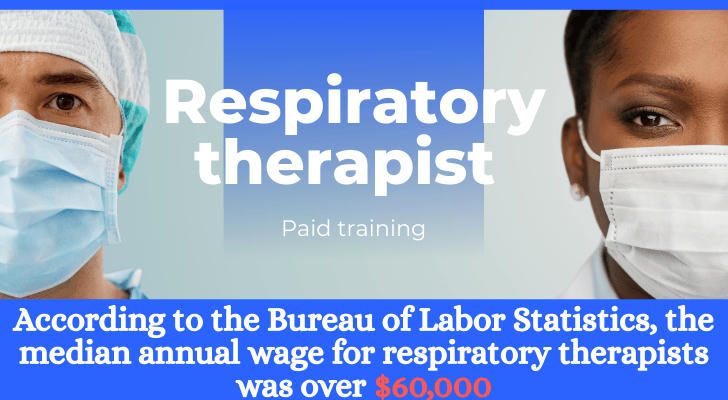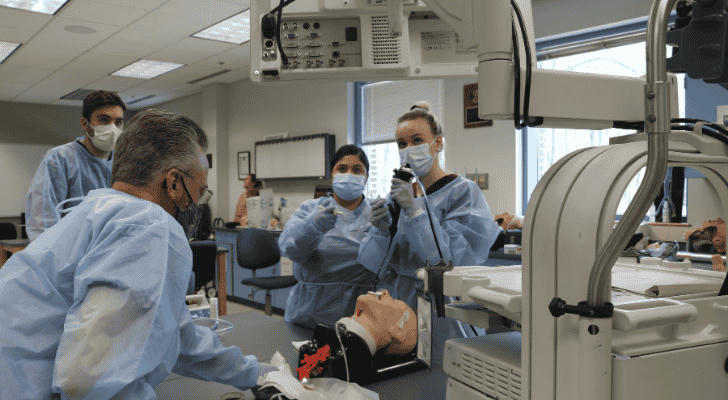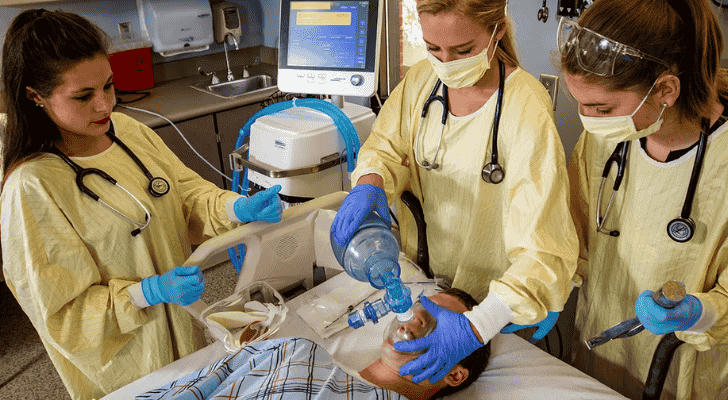Paid Training Programs for Respiratory Care Practitioners in 2025
Start your journey as a Respiratory Care Practitioner in 2025 with paid training opportunities supported by programs like the National Health Service Corps (NHSC) and the Health Resources and Services Administration (HRSA). Gain practical experience and financial assistance while entering a profession with a strong job outlook and a median salary exceeding $60,000 annually.

Government and Non-Profit Organization Supported Training Programs
Several government agencies and non-profit organizations have partnered with healthcare institutions to offer paid training programs for those pursuing a career as respiratory care practitioners. These programs are designed to support students financially while they complete their education, typically over a period of two years.
For instance, the National Health Service Corps (NHSC) offers financial support for students pursuing healthcare careers, including respiratory therapy. This program provides scholarships and loan repayment opportunities for those willing to work in underserved areas. Similarly, the Health Resources and Services Administration (HRSA) runs initiatives that help fund respiratory care programs for students who meet certain criteria, such as those in low-income areas. These programs typically allow students to work part-time or in clinical settings while studying, providing both income and valuable hands-on experience.
Furthermore, many hospitals have their own paid internship and training programs. For example, Mayo Clinic and Cleveland Clinic offer paid clinical internships in respiratory therapy, allowing students to gain direct experience in a hospital setting while earning an income.
Training Opportunities for Different Age Groups
For young adults, those straight out of high school can benefit from these paid training programs, allowing them to enter the workforce quickly without accumulating significant student debt. This option is ideal for individuals who are eager to start their careers immediately after high school.
Mid-career professionals, many of whom are in their 30s and 40s, are often seeking a career transition. Paid respiratory therapy training programs allow these professionals to gain a new skill set while supporting themselves financially, making it a viable option for those looking to switch fields without a substantial financial burden.
Older adults seeking a fulfilling second career can also take advantage of paid respiratory care programs. Many healthcare institutions recognize the value of older workers’ experience and offer flexible schedules that cater to their needs.
What Will You Learn in These Programs?
Paid training programs for respiratory care practitioners typically cover a comprehensive curriculum designed to equip students with the necessary skills to work in clinical settings. Key areas of study include:
Respiratory Anatomy and Physiology: Understanding the structure and function of the respiratory system.
Clinical Techniques: Learning how to administer treatments such as oxygen therapy, mechanical ventilation, and aerosol therapy.
Patient Care: Gaining experience in patient assessment, monitoring vital signs, and managing respiratory conditions like asthma, COPD, and pneumonia.
Medical Equipment: Operating and troubleshooting respiratory care equipment, such as ventilators and oxygen concentrators.

The hands-on training component allows students to apply what they learn in real-world clinical settings, under the supervision of experienced professionals.
Benefits After Completing the Training
Upon completing a paid training program for respiratory care practitioners, graduates typically enjoy a wide range of benefits.
Job stability is one of the most significant advantages. The demand for respiratory care practitioners is expected to grow significantly over the next decade, particularly in the wake of the global health crisis. With a certification in respiratory therapy, graduates can expect job security in various settings, including hospitals, rehabilitation centers, and home care.
A competitive salary is another benefit. Graduates of these programs can earn competitive salaries. According to the Bureau of Labor Statistics, the median annual wage for respiratory therapists was over $60,000 in 2023, with experienced practitioners earning even more.
Additionally, career advancement opportunities are abundant. Respiratory therapists with additional certifications or those who specialize in areas like neonatal or critical care can earn higher salaries and take on more senior roles in healthcare settings.
How to Apply
Applying for paid training programs typically involves several steps:
Research Available Programs: Start by researching hospitals, clinics, and educational institutions that offer paid training for respiratory care practitioners. Websites like AARC and HRSA list available programs.
Meet the Requirements: Most programs have specific eligibility criteria, including minimum education levels (usually a high school diploma or GED), a clean criminal record, and sometimes a background in healthcare or science.
Submit an Application: After identifying the right program, submit your application, ensuring you meet the required deadlines and provide all necessary documents, such as transcripts and reference letters.
Real-Life Examples
Real-life success stories illustrate the benefits of paid respiratory therapy training programs. For instance, Emily, a 35-year-old mother of two, transitioned into respiratory therapy after working in retail for over a decade. Through a paid internship at Houston Methodist Hospital, she not only earned a salary while completing her education but was also offered a full-time position after her internship. Emily is now thriving in her new career, with a stable job and a salary that has significantly improved her family's financial situation.

Paid training programs for respiratory care practitioners in 2025 offer a valuable opportunity for individuals looking to enter the healthcare field without incurring significant debt.
